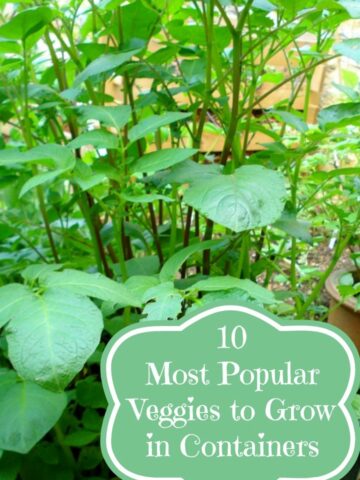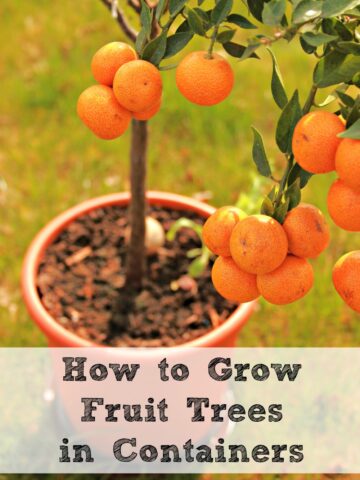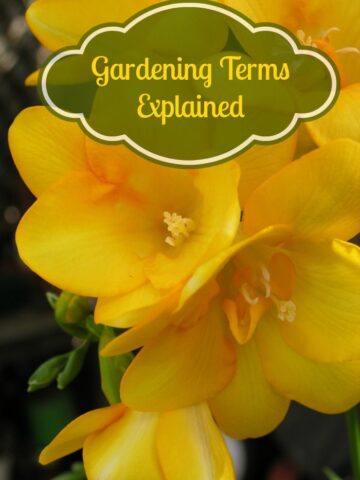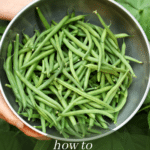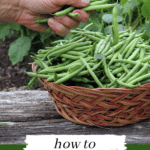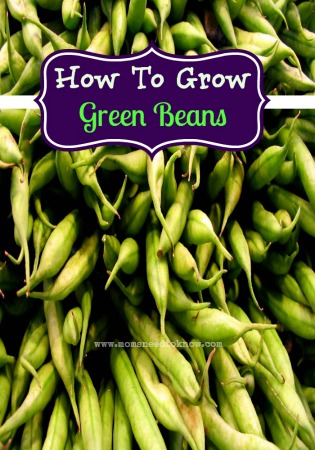
Green beans have been cultivated in gardens for hundreds of years. There are hundreds of different varieties from bush to pole, from Heirloom to hybridized, and even colors ranging from dark green to purple. There are so many green beans to plant, so little time! Here is a little guide to show you how to grow green beans in your vegetable garden this summer.
Green beans are a heat-loving plant and do best in your summer vegetable garden. In years past green beans were part of the trio of veggies always grown together – corn, tomatoes, and green beans. Farmers would use the stalks of corn as the trellis for the green beans. When growing pole beans, you do need to plan for a trellis or some structure for the beans to grow up. String works really well as does a wooden tri-pole trellis. Use plant tape to tie up the tendrils every foot or so.
With bush beans you don’t need to trellis them, but you do need at least 2-3 feet of space for the plants to grow. Green beans are large seeds so if planting by seed, dig an inch hole and set two seeds into each hole. Cover them with organic potting soil and water in the seeds very well. When the seeds sprout up, remove the weaker of the two seedlings and toss it into your dinner salad.
When growing transplants, try to get the smallest plants you can. Green beans are prolific growers and need time to have the roots develop in your soil and not in the transplant pot. You can harvest green beans right around 50-60 days depending on the variety you have chosen.
Green beans come in many different colors and flavors. For something different, plant Royal Purple Beans or Garlic Yellow Beans. Those two combined with a traditional green bean would make a lovely three-bean casserole at your summer picnic.
Green beans tolerate a little bit of drought and heat. Before the first signs of frost appear, make sure you have harvested all the rest of the pods. Beans can grow great in square foot garden if you use pole beans and plant a bean on each corner and one in the center and work them up a trellis. That’s a lot of plants in a small area so just now you might have to can or pickle all those lovely beans!
Most green beans are pretty insect resistant but they do tend to have an issue with mold and fungus. If you start to see fungus growth, remove all infected parts of the plant and burn them so it doesn’t spread. Grab a fungicide spray and use according to the directions. This often happens when you have poor airflow around the green beans. You might have to remove some of the foliage or not have the plants so close together if you don’t get a nice gentle wind throughout the day. (and make sure to check out this list of Natural Pest Deterrents For Your Garden!)
Enjoy your crop of green beans as this is one vegetable that can be used at a later date. Green beans are not only great fresh right out of the garden, but also freeze quite well, are famous pickled, and great to can for a rainy day.
You might also be interested in these gardening tips:


